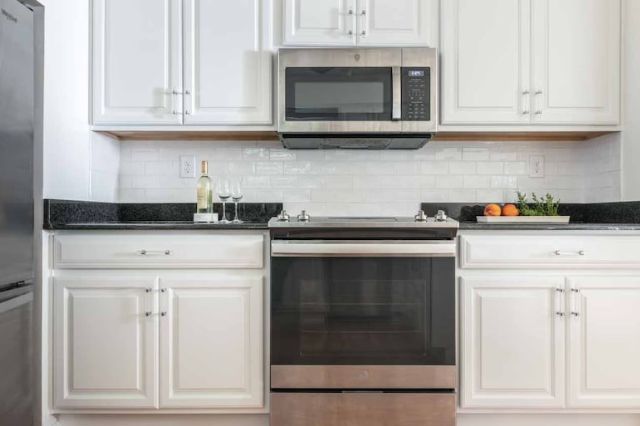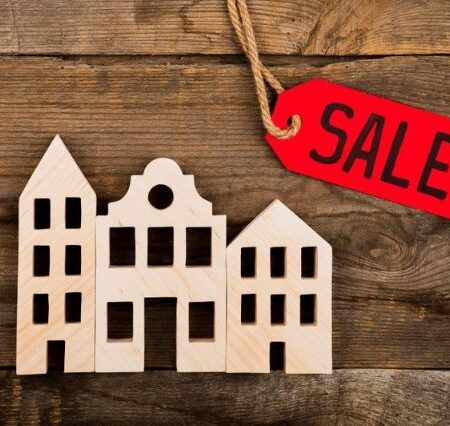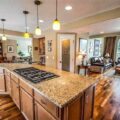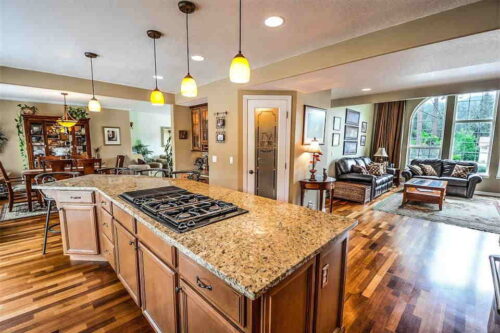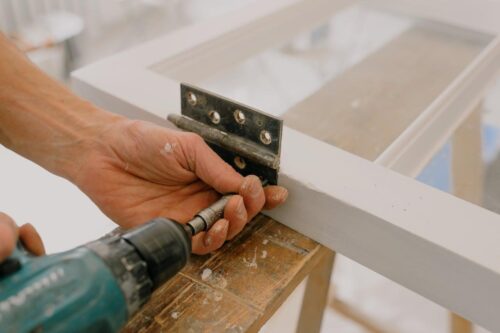Embarking on a kitchen remodeling journey unfolds a spectrum of aesthetic possibilities, yet it necessitates a grounded approach to budgeting. Every household’s remodel is uniquely sculpted, reflecting personal desires and practical needs.
A wise benchmark suggests allocating approximately 10% of your home’s total financial plan towards rejuvenating your kitchen. This investment primarily encompasses pivotal elements such as flooring, countertops, cabinetry, and appliances.
Let’s delve into the crucial factors that should guide your budgeting for a kitchen makeover.
Cabinetry: The Heart of Kitchen Aesthetics
The investment in cabinetry can significantly influence your remodeling budget, with costs ranging from $500 to $1,500 per individual unit, excluding installation. For those navigating the decision between convenience and customization, pre assembled base cabinets stand out as a time-saving option, arriving ready to install, thereby streamlining the renovation process.
Conversely, RTA (Ready-to-Assemble) cabinets present a more hands-on approach, potentially offering savings on shipping and allowing for a higher degree of personalization in the assembly and installation phases.
Factors such as the total number of cabinet boxes, material selection, and production method are pivotal. Wood cabinets bring warmth and timeless elegance to a kitchen, with options like cherry and maple offering distinctive grains and hues.
Laminate cabinets, while more cost-effective, can mimic the look of wood or other finishes and offer a durable and low-maintenance option. The choice between semi-custom and custom cabinets allows homeowners to balance budget constraints with the desire for a personalized kitchen design.
Incorporating efficient storage solutions within cabinetry, such as pull-out drawers and spice racks, can maximize space and functionality, enhancing the overall utility of your kitchen.
Flooring: A Foundation of Style and Function
The choice of flooring material and the square footage it covers play significant roles in dicting the overall cost. Prices may vary widely, ranging from $2 to $40 per square foot, based on your selected surface.
For those adhering to a budget, vinyl, linoleum, and tile emerge as cost-effective solutions, typically costing $1 to $8 per square foot, installation not included. On the flip side, high-end materials like natural stones or hardwood can set you back $4 to $30 per square foot.
These materials not only enhance the visual appeal but also add to the resale value of your home, making them a worthwhile investment for many. Laminate flooring, offering the opulent look of hardwood at a fraction of the cost, is an attractive option for budget-conscious homeowners, providing durability and ease of maintenance.
Countertops: Combining Elegance and Durability
The spectrum of countertop materials offers diverse aesthetic and functional benefits, with costs ranging from $10 to $125 per square foot. Beyond granite, materials like quartz provide a harmonious blend of beauty and resilience, mimicking the natural look of stone while offering enhanced durability.
For those seeking an eco-friendly option, materials such as recycled glass or bamboo offer unique aesthetics and sustainability benefits. Epoxy countertops, known for their versatility in design, allow homeowners to achieve a customized look, incorporating anything from vibrant colors to metallic finishes, making them a popular choice for DIY enthusiasts.
Kitchen Appliances: Reflecting Lifestyle and Budget
Selecting appliances involves balancing technological advancements and energy efficiency with budget considerations. Modern appliances offer features that enhance convenience and culinary creativity, from induction cooktops that speed up cooking times to refrigerators with customizable temperature zones.
For those passionate about sustainability, energy-efficient appliances can reduce long-term utility costs, contributing to both environmental conservation and budgetary savings. When selecting appliances, consider the integration with your kitchen’s design, opting for finishes and styles that complement your cabinetry and countertops for a cohesive look.
Strategies for Economical Kitchen Remodeling
Revamping your kitchen doesn’t have to break the bank. With a few strategic choices, you can breathe new life into your space while adhering to a budget. Here are some cost-effective methods to refresh your kitchen’s aesthetic and functionality:
- Refresh Kitchen Cabinets: Applying a new coat of paint or updating hardware can transform the look of your cabinets at a minimal cost.
- DIY Countertops: With a variety of materials and tutorials available, homeowners can undertake countertop installation, embracing a project that combines creativity with cost savings.
- Refurbish Kitchen Appliances: Simple updates, such as installing new panels or handles, can give appliances a fresh look without the need for full replacement.
- Incorporate a Backsplash: A new backsplash can serve as a focal point, adding color and texture to your kitchen. Materials like ceramic tile or glass offer both affordability and style.
- Maintain the Existing Layout: Keeping plumbing and electrical in their current locations minimizes labor and materials costs, allowing for more investment in quality materials and finishes.
Bottom Line
Approaching your kitchen remodel with a detailed plan and a clear budget will ensure that the project enhances both the functionality and beauty of your home.
By carefully selecting materials and employing cost-saving strategies, you can achieve a transformation that aligns with your vision and financial goals, allowing you to enjoy the heart of your home for years to come.

